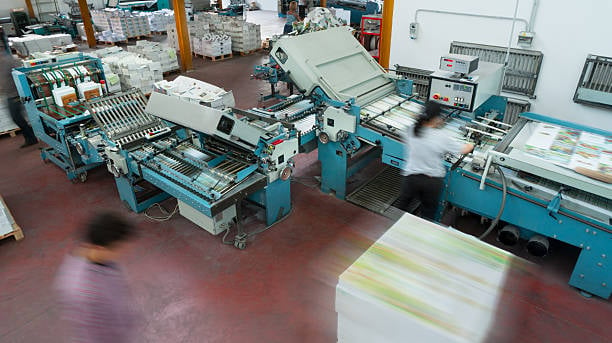You already know that you'll need to come up with the ideal design, color scheme, copy, and layout whether you're looking for brochures, business cards, posters, or other marketing materials. Even after you've completed all of those steps, there is still one more crucial choice to make: choose between digital and offset printing.
Is digital printing superior to offset printing? It's a common question, yet the response is not as simple and straightforward as you might expect. Naturally, "yes and no" is the answer. To determine which is superior for printing your marketing materials, let's examine the distinctions between offset printing and digital printing.
What is Offset Printing?
The most frequent printing method used for big-volume commercial tasks is offset printing, often known as lithography. Have you ever seen videos of newspapers being rolled up in large rolls? Offset printing is that.
This is how it goes: One metal plate is burned with the design by the printer for each color. Offset printing enables for the use of unique ink colors, most notably Pantone colors, in addition to the conventional four colors (cyan, magenta, yellow, and black (key), or CMYK).
After that, the image is transferred to a rubber "blanket" and rolled onto a piece of paper. Because the ink is not applied directly to the paper, it is called offset printing. Offset printing is the greatest option when higher quantities are required because it offers accurate color reproduction, crisp, clean printing that looks professional, and efficient operation once it is set up.
What is Digital Printing?
Instead of using plates as offset printing does, digital printing can also use a toner (found in laser printers) or larger printers that use liquid ink. When printing in smaller quantities, such as a run of 20 greeting cards or 100 flyers, digital printing excels. The capacity to print with varied data is another advantage of digital printing. The only option is digital when each component requires a distinct code, name, or address.
The Benefits of Offset Printing Include
- Printing in bulk can be done affordably.
- The cost per print decreases as you print more.
- You can utilize a wide range of paper kinds with unique finishes.
- There are unique custom inks like shiny and Pantone hues available.
- highest printing quality possible, with more clarity and color accuracy.
The Benefits of Digital Printing Include
- Short runs have lower setup expenses.
- Reduced minimal requirements (as low as 1, 20, or 50 pieces)
- Inexpensive digital printing in black and white
- Capacity for variable data (names, addresses, codes, or numbering can be done easily)
Is my upcoming print job a good fit for offset printing?
Printing techniques like offset and digital are both beneficial. Depending on the demands of your project, each has specific advantages. Offset printing is the only option when you require larger runs of a project, up to hundreds or thousands, or are employing a unique, brand-specific Pantone hue. The offset method also allows for the use of a far wider range of specialty inks and unique papers, including metallic and fluorescent inks.
Digital is your best option if you need a short run of fewer than 100 copies or if you need particular addresses or information. The best part is that both of these options can satisfy your needs as a business, and the high level of quality means that you will receive printed materials that will enhance your reputation.
Contact a friendly specialist of HUIDA right away to get started on your upcoming offset printing project!

